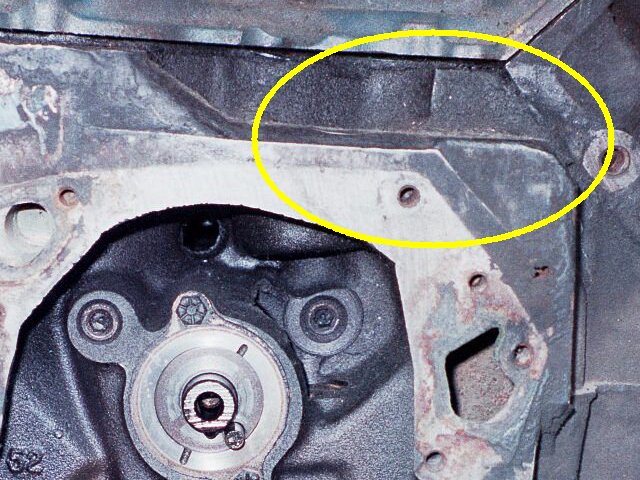.
Mystic Fish, installing oil restrictors is one of the common practices that is done on Cleveland engines that will be run at high rpm for a sustained period of time . Installing these restrictors increases oil to the crank without causing an insufficient flow to the cam. This has been proven to be effective in countless engines, however, some people opt not to do this and instead install a restrictor elsewhere.
If you are installing cam bearings, you should install the front bearing to the factory depth which is .003" to .005" . One of the reasons for this is that there is a huge hole in the front cam journal that is not always completely blocked off by the bearing and the deeper the bearing is, the more of the hole is exposed . The more of the hole that is exposed, the more oil that freely leaks out, and since the Clevelands do have a weak are regarding oil to the mains, the less unnecessary freely leaking orifices there is the better.
Also, due to the design, the rods only get a shot of oil intermittently with every revolution of the crank, so to increase the duration of oil to the rods, you can install half grooved bearings . The groove goes in the top where the least amount of stress is.
This exposed oil hole is why ford only installs the fron bearing ,003" to .005" deep.
.
.
.
Exactly..I did the larger diameter pushrods with a restricted oil hole..(which I mentioned in my first post) Piece of mind and plug and play with out the fuss or expense of other methods
Restricting oil to the cam bearings is free if you are rebuilding an engine . All you need to do is buy oil restrictor bearings . Tim Meyer is one of the authorities on this series of engines and he sells them.
"Today, there is a better alternative to the old restrictor plugs. Tim Meyer offers special cam bearings with the oil-restrictor holes built into the bearing (PN F26 fits Cleveland)."
http://www.tmeyerinc.com/
:whistling:






